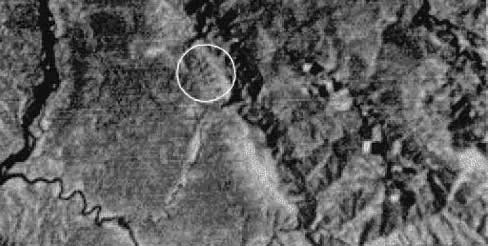Tatunca Nara was never seen or heard from again, or so the story was written
(see UPDATE below.)
Who were the Former Masters? Extraterrestrials? Atlanteans? What can we deduce from Tatunca Nara's story, and Karl Brugger's account? Could Brugger have made up the whole story? Could he have combined existing legends with 20th century history? It's possible but not likely. Although some parts of the story may seem far-fetched, for the most part they are true, as far as Brugger knew it.
There are some parallels between the Chromicle of Akakor and the Peruvian legends of Gran Paititi. Was Paititi where the last Incas fled? Was Akakor the Inca Paititi?
Tatunca Nara spoke broken German. If he lived in the jungle all his life, where did he learn German? From Reinha, his mother?
Since the Chromicle of Akakor was published, several explorers have lost their life searching for Akakor. Gregory Deyermenjian, an American explorer who had spent a lot of time in Peru in search of Gran Paititi, reportedly told David Childress (the author of Lost Cities and Ancient Mysteries of South America) about a young American from a wealthy family who came to Cuzco (Peru) in 1977 obsessed with finding Akakor.
He said the young American hired a hotel owner to escort him to the headwaters of Rio Yaco where he planned to meet an Indian guide who would lead him to Akakor. But the headwaters of the Rio Yaco is located in a very remote area nearly impossible to reach from Peru. The hotel owner escorted him as far as Cosnipate.
The young aristocrat was never seen or heard from again.
It seems quite plausible that the Ugha Mongulala are real people, and with that, we must accept the reality that they have real traditions and real cities. If Tatunca Nara really had a German mother, than it is quite plausible that Germans could have had an influence on their traditions and their mythology.
Karl Brugger investigated whether the Nazis actually occupied Akakor and whether or not they had a plan to invade Brazil. According to Brugger, the Third Reich believed it was essential to keep Brazil neutral in order for the German U-boats to have uncontested control of the South Atlantic, and an invasion of Brazil was the natural expansion plan of the Third Reich. But the United States ruined their plan by persuading the Brazilian government to align with the Allies.
Unhappy with Brazil's decision to side with the Allies, Germany retaliated by sinking as many as 38 Brazilian ships by U-boats from 1942 to the end of the war. But was it possible for Germany to land soldiers in Amazonia and make their way to Akakor?
Apparently, there are eye-witness accounts of German U-boats landing on the coast of Rio de Janeiro, and in 1938 a Nazi U-boat established contact with the German colony at Manaus and made a geological survey including a documentary film of Amazonia, which has been preserved in the East Berlin archives.
In May 1945, on the day before Germany surrendered, two U-boats, U-530 and U-977, departed from northern Germany and headed to South America. About three months later, they surrendered to Argentina, at different times. When the captians of the U-boats were turned over to the Americans, under thorough interrogation, they said they had had no important passengers onboard and that the reason they surrendered to Argentina was because they did not want to surrender to the British. But where had they been prior to their surrender? And why did it take them nearly three months to surrender?
Natunca Nara supposedly knew nothing of the war in Europe. His knowledge of the war was limited to what the Germans told him, and yet, according to Natunca Nara, Germans were still sending soldiers to Akakor in May 1945.
As if that wasn't suspicious enough, Karl Brugger was murdered outside his apartment in Manaus by an unknown assailant (assassin?). Why? Did his murder have anything to do with his book, and/or his knowledge of Akakor? The answer will probably never be known.
And so the question begs to be repeated: Does an ancient stone city or cities exist on the Brazilian-Peruvian border? On December 30, 1975, the Landsat II satellite photographed an area of southeastern Peru at 13° S latitude, 71° 30" W longitude. The photographs revealed 12 pyramids covered with trees. Unfortunately, all attempts to reach these pyramids have led to the death and disappearance of many explorers. Could these pyramids be a part of the Akakor complex?

SOURCE: Lost Cities and Ancient Mysteries of South American by David
Hatcher Childress
UPDATE: January 18, 2006
I received an email from a missionary in Brazil informing me Tatunca Nara
is not only alive and well, he lives down the street from him in Barcelos.
He said he knows Tatunca and his Brazilian wife and that Tatunca continues
to take Europeans on jungle expeditions, and that he is famous for being the
only "gringo" who claims to be an Indian.